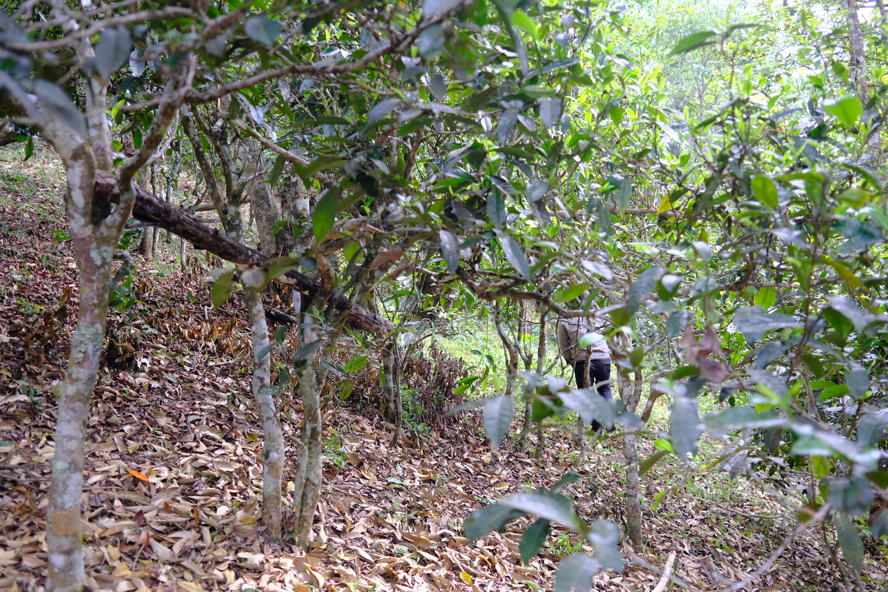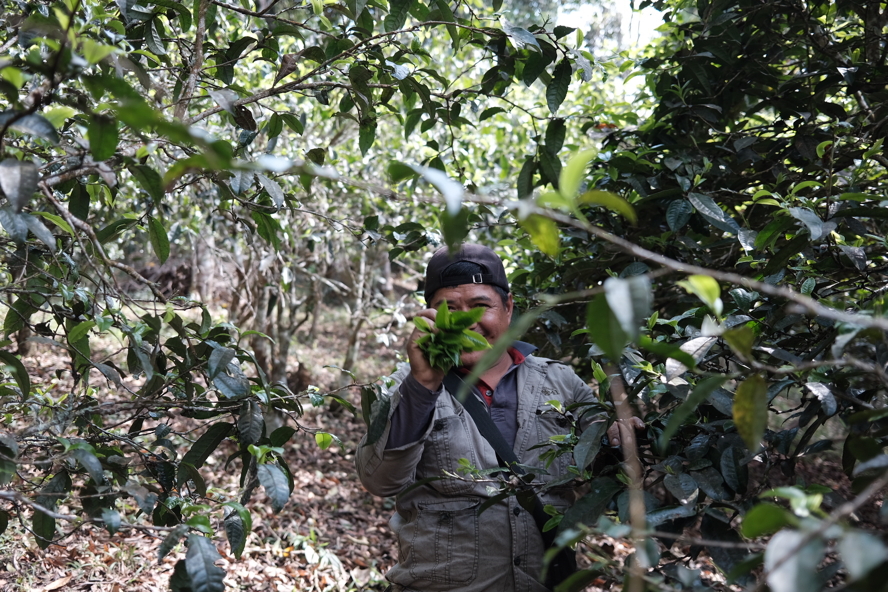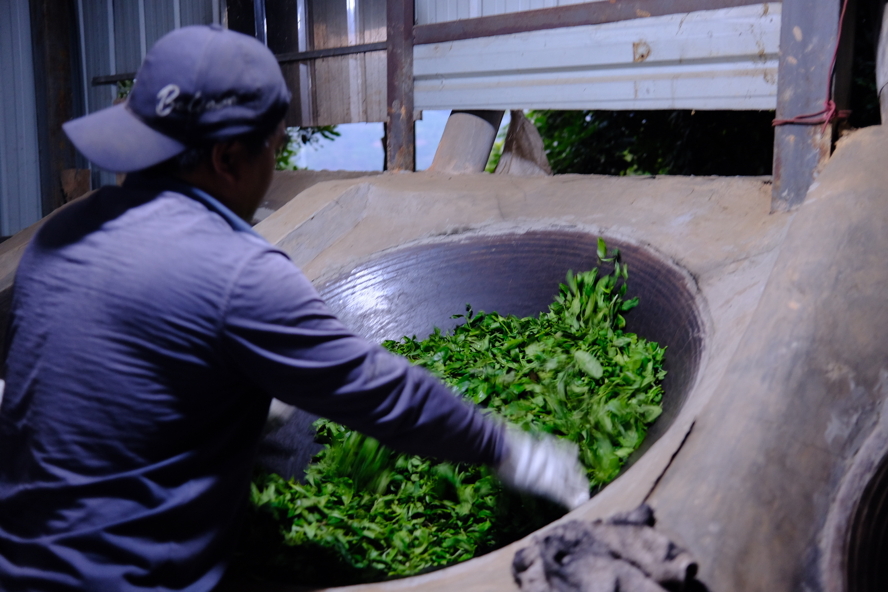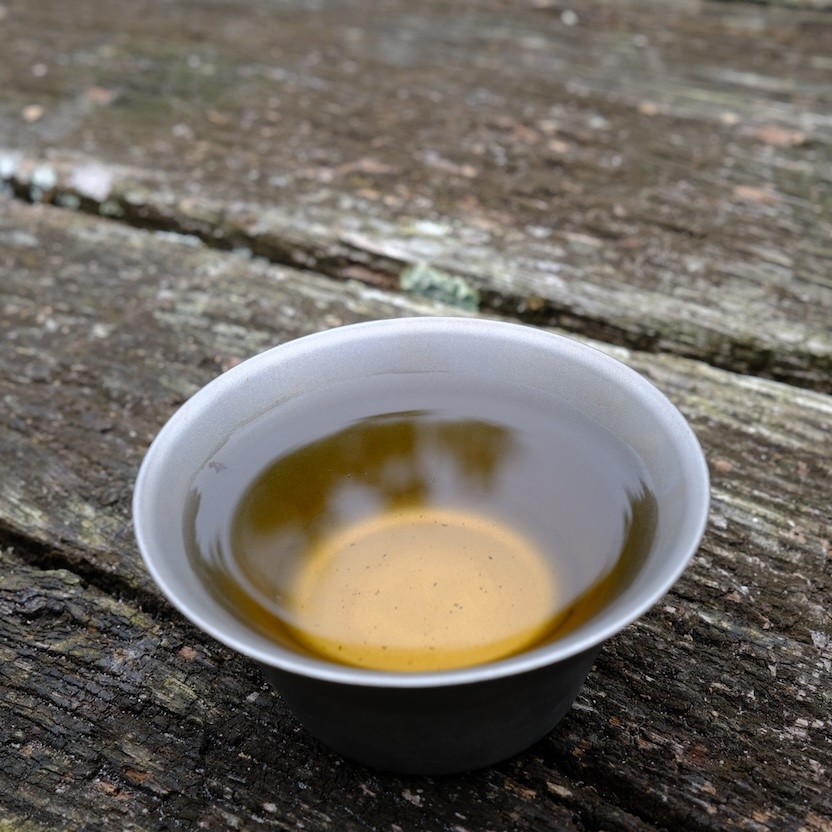Some thoughts on ancient tree Pu'er tea
Exploring Ban Po Lao Zhai

Nannuo Shan is a magical place. It has a rather busy road up to Ban Po Lao Zhai, which passes through several other small villages.
There’s tea everywhere: tea gardens, tea houses, and motorbikes transporting freshly picked leaves.


We met the owners of an ancient tea garden just above Ban Po while they were finishing today’s harvest. The leaves are placed in a little shed before they are all gathered into large bags.

The couple lives in a neighbouring village, where they do the processing in the evening.
The gushu (ancient tree) tea is processed by hand, while the tea from the smaller, younger bushes is processed using a machine. This seems to be common practice, and we’ve seen it in most other places too (including Lao Ban Zhang, for instance).
The leaves are fried in large, wood-fired woks under continuous movement for about 20 minutes. Here, the tea can be influenced quite a bit. The essential stage is the first couple of minutes, until the leaves reach a certain dryness. We were only allowed to jump in and help during the later stage.
It gets hot, and it’s quite tiring — but the smell is amazing!

Each wok takes about 5 kg of fresh tea leaves, which eventually results in a bit more than 1 kg of tea.
We worked for about 2 hours and then had dinner.
While the house is fairly modern, most kitchens in Xishuangbanna are still built around an open fireplace. On the fire there is usually a large kettle, and of course, it’s used to grill some meat and veggies on sticks.
Alongside this rather raw and down-to-earth cooking method, there is also a rice cooker and modern cooking plates.
Everyone sits around a round table — the kind that's only about 30 cm high — and shares food together.
While we’re eating, the tea leaves are left to cool down, to be rolled later and then dried in the sun the next day.
We’re looking forward to being able to offer you this great tea soon!





Leave a comment